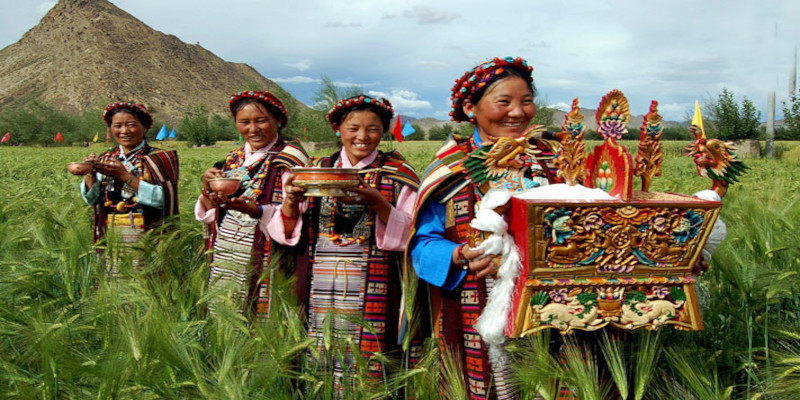21st May: Tibetans have a legendary ability to withstand altitude and cold extremes, which has been conditioned by the harsh climate of the Tibetan plateau. Scientists had discovered a gene that increases hemoglobin oxygen saturation and the fact that Tibetan children develop faster than other children up to the age of five(presumably as a defense against heat loss since larger bodies have a more favorable volume to surface ratio).
According to recent studies, Tibetans living at high altitudes have no more oxygen in their blood than other humans, but they have 10 times more nitric oxide (NO) and twice the forearm blood supply of people living at low altitudes. Nitric oxide allows blood vessels to dilate, allowing blood to flow more freely to the extremities and assisting in the release of oxygen to tissues. This may also understand why high-altitude dwellers have rosy cheeks or the Tibetan term “Dongmar Bhoepa Tso”. It is unknown whether the high levels of nitric oxide are due to a genetic trait or whether people from lower altitudes will eventually adapt in the same way after living at high altitudes for extended periods of time.
Tibetans In the Plains:
Some Tibetans however, have now migrated to low-altitude regions such as Karnataka. When Dr. K. Thangaraj (now DBT-Director of the Centre for DNA Finger Printing and Diagnostics – CDFD) and his team at the CSIR-Centre for Cellular and Molecular Biology (CCMB), Hyderabad, studied changes in physiological factors of Tibetans now living in low-altitude regions such as Karnataka, they discovered that Tibetan blood parameters are significantly different from those of their high-altitude counterparts.
“We discovered that low-altitude Tibetans have substantially lower red blood cells, hemoglobin concentration, and hematocrit. Their hemoglobin levels are much closer to those on the plains than those living above 4500 meters,” said first author Nipa Basak, according to The Hindu.
“Our research indicates that when Tibetans live in non-native, low-altitude areas for a long time, their bodies adapt to cope with the relatively hyperoxic environment,” said Dr. Thangaraj, who was also the lead investigator, according to The Hindu.
Physiological factors of Tibetan ethnicity people from different regions of India’s high altitudes of Ladakh at 4,500-4,900 meters are compared to those living in Tibetan settlements in Bylakuppe, Karnataka, at an altitude of about 850 meters in this report.
After the Tibetan uprising in 1959, the population of Karnataka migrated from Tibet and has lived there for the past 50 years. According to an official release, the study was recently published in the ‘Journal of Blood Medicine,’ and it was carried out in collaboration with researchers from Ladakh and Karnataka, including Dr. Tsering Norboo of the Ladakh Institute of Prevention and Dr. MS Mustak of Mangalore University in Karnataka.
Image Courtesy: chinaculturetour.com

